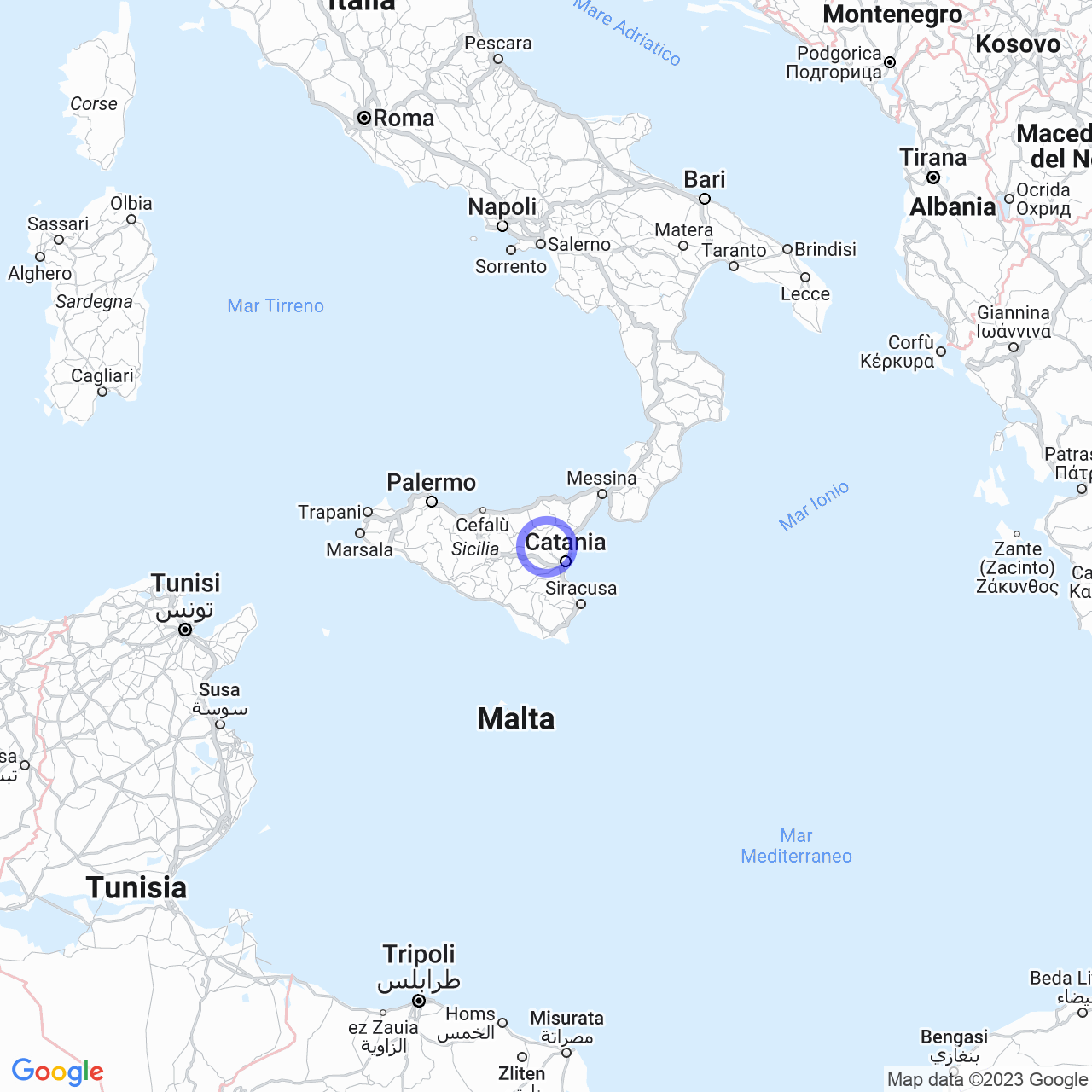Adrano
Adrano: a city between Mount Etna and history
Adrano is an Italian municipality located in the metropolitan city of Catania, in Sicily, which was the capital of the homonymous County of Aderno from the 14th to the 19th century. With a population of 33,573 inhabitants, Adrano has recently been awarded the title of city thanks to its historical, artistic, civic, and demographic importance.
Physical geography
Adrano is located on the north-western part of the metropolitan city of Catania, bordering the Free Municipal Consortium of Enna. It is situated on the south-western slope of Mount Etna, 560 meters above sea level, and part of the Etna Park. The territory of Adrano covers an area of 83.22 km² and borders Bronte, Maletto, Randazzo, and Castiglione di Sicilia to the north, Centuripe in the province of Enna to the west, Sant'Alfio and Zafferana Etnea to the east, and Biancavilla to the south. The territory of Adrano is mainly hilly and plain, with an average altitude of 560 meters.

Climate
Adrano has a Mediterranean climate, but its altitude and distance from the sea influence the climate, characterizing its cool and humid winters and hot and sunny summers.
Origin of the name
The name Adrano has Sicilian roots and derives from the Latin "āter" and Umbrian "ādro" which means "black". The inhabitants of Adrano are called "adraniti", while when the city was known as Adernò, they were called "adernesi" or "adornesi". In the local dialect, the expression "ddurnìsi o ddornesi" is commonly used to refer to the inhabitants of Adrano.
History
The roots of Adrano date back to the Neolithic period, although the major evidence can be associated with the Siculi, who settled in the Etna territory around the 10th century BC and founded the anonymous city in the Mendolito district. Surviving from this city today are the walls, gates, traces of dwellings, a necropolis, and numerous Sicilian inscriptions. With the Roman conquest in the 3rd century BC, Adrano became an important agricultural and transit center. Later on, Adrano was contested by different populations, including the Goths and the Arabs, known for their significant cultural influence on the city.
With the advent of the Normans, Adrano became the capital of the homonymous County of Adernò, and important buildings were built such as the church of Sant'Agata, today the mother church of the city, and the Norman castle. In the following centuries, the city saw the construction of important religious buildings such as the church of San Giovanni Battista and the church of Santa Maria del Rosario.
Culture and traditions
Adrano is a city rich in culture and traditions, as demonstrated by the importance of the San Nicolò festival, the city's patron saint, which is held every year on December 6th. Many tourist attractions in the city are related to its history and ancient traditions, such as the Civic Museum and the church of Sant'Agata.
Economy
The economy of Adrano is mainly based on agriculture, the production of food products, and the extraction of construction materials. The city also benefits from active tourism, thanks to its historical and natural attractions, such as Mount Etna and the Etna Park.
Conclusion
In conclusion, Adrano is a unique city, rich in history, culture, and traditions. Its geographical position on the slopes of Mount Etna, its Mediterranean climate, and its friendly population make the city an excellent destination for tourists looking for an unforgettable vacation on the wonderful Sicilian island.
